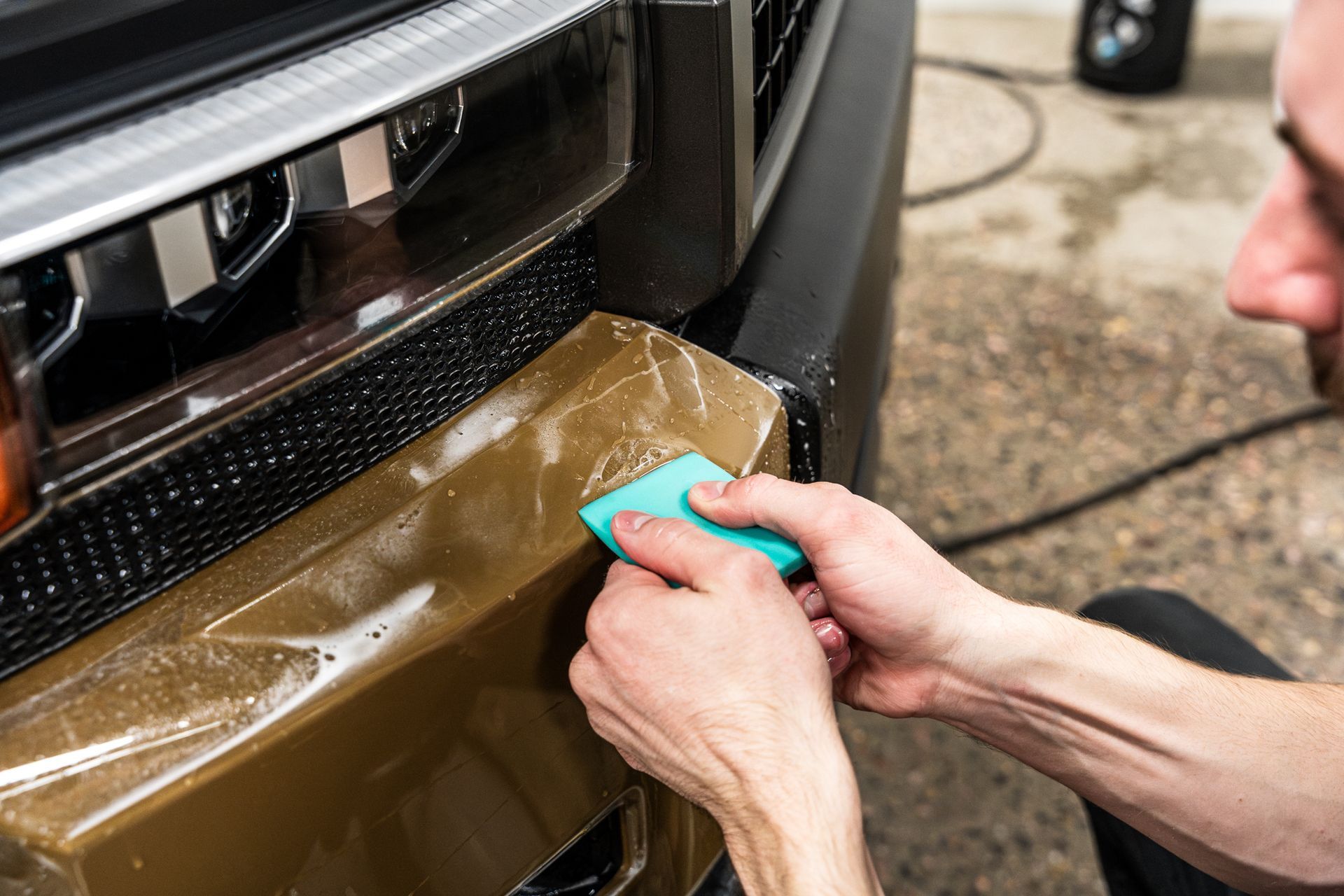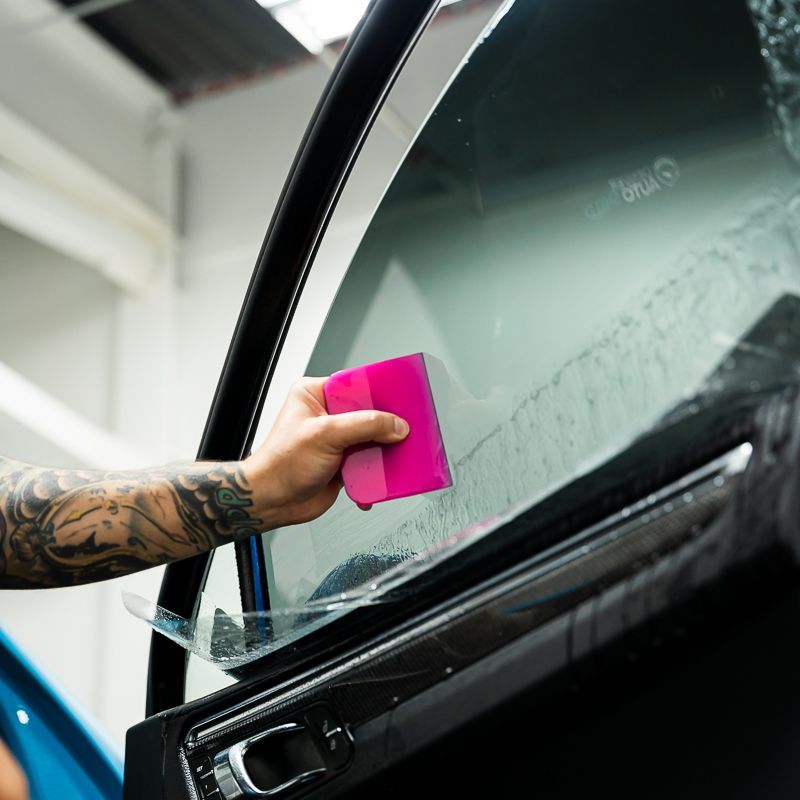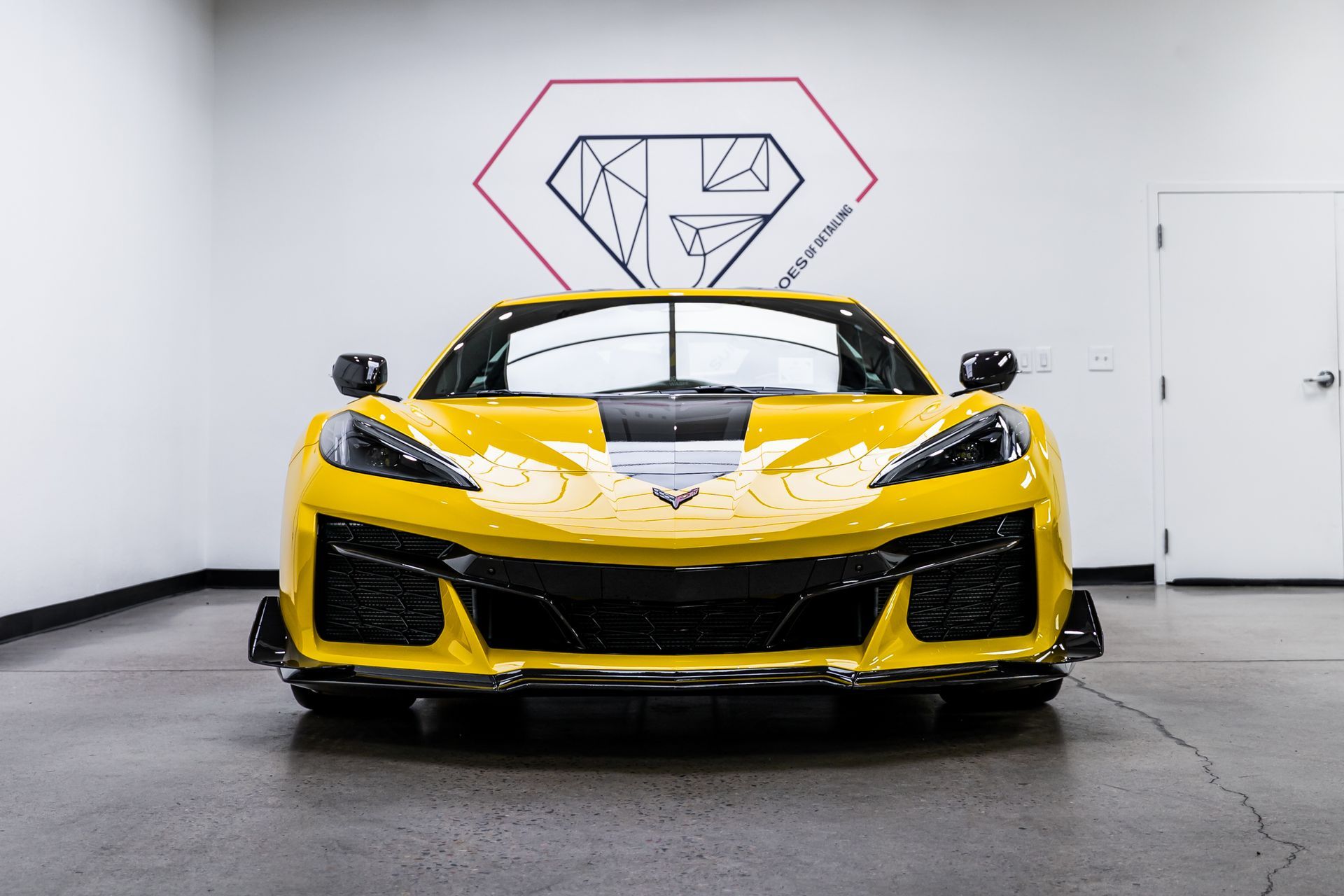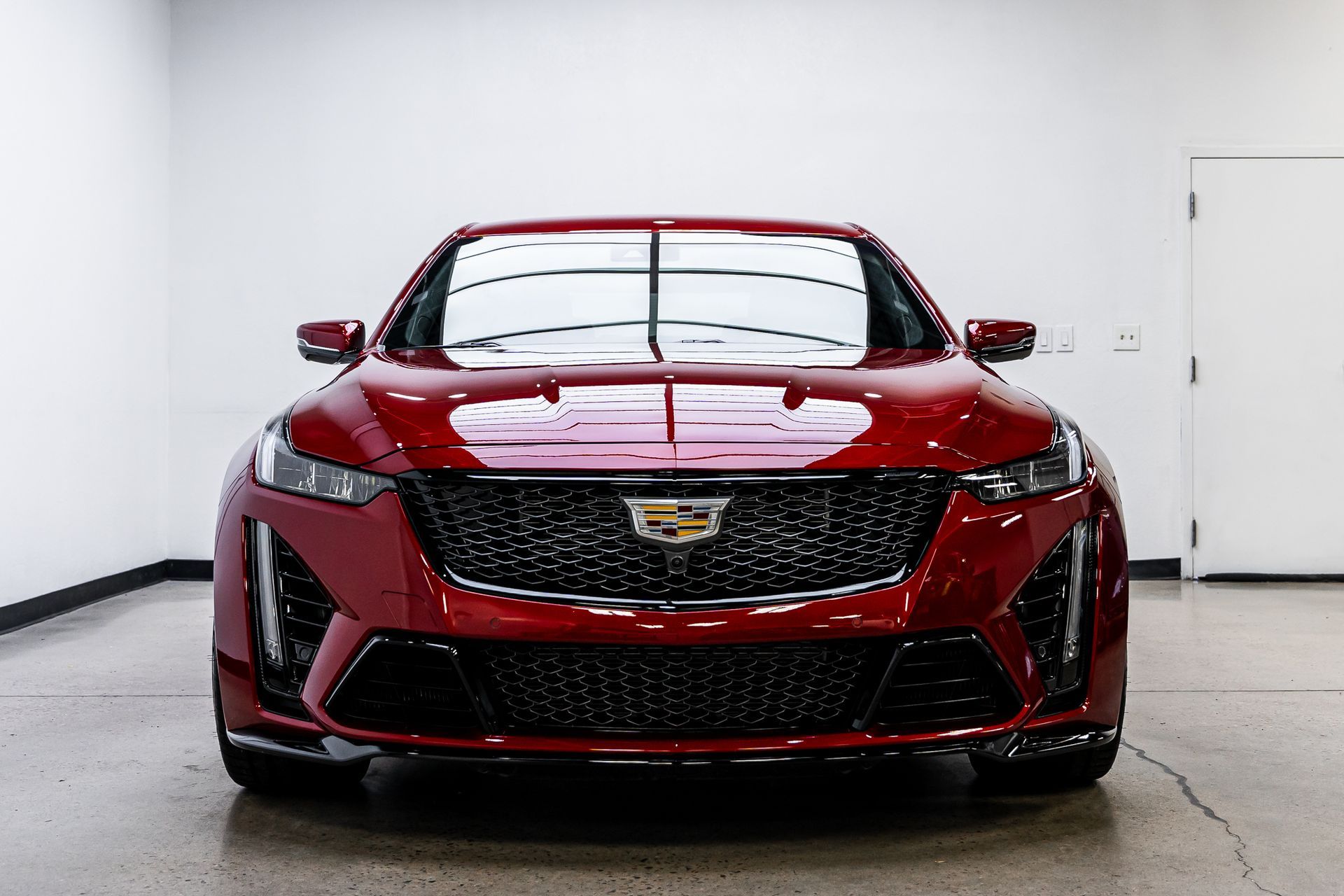What Is Paint Protection Film? How Does It Work and Its Benefits
CALL (720) 662-8520
GET A FREE ESTIMATEWhen you invest in a vehicle, it’s not just about getting from point A to point B; it's about protecting your ride's look and value for the long haul. If you've ever watched in horror as a tiny rock chip marred that shiny paint job, you know how important protection can be. That’s where Paint Protection Film, or PPF, comes into play. This amazing product acts like a shield for your car, saving it from scratches, chips, and other wear and tear that life throws at it. In this article, we’ll dive into what PPF is, how it works, and why it could be one of the smartest choices you make for your vehicle's longevity and appearance.
Paint protection film (PPF) is a transparent polyurethane film applied to the surface of a vehicle to shield its paint from damage such as scratches, rock chips, and UV exposure. It works by absorbing and dispersing impact energy while conforming to the vehicle's contours, ensuring complete coverage and maintaining the aesthetic appeal of the vehicle over time.
What Is Paint Protection Film?
Paint protection film, commonly referred to as PPF, is a sophisticated protective shield for your vehicle. Made primarily from high-quality thermoplastic urethane, this film clings tightly to your car's painted surfaces, creating an invisible barrier against the elements. Imagine a superhero suit for your car—robust yet discreet—that fights off damaging particles like road debris, rock chips, and minor scratches as they approach. Every time you hit the road, you’re in a battle against wear and tear.
Material Composition
Think of PPF as a second skin for your vehicle. Its material composition includes urethane or polyurethane, known for their durability and flexibility—qualities essential for enduring the daily grind our cars face. This construction helps PPF maintain its integrity even under harsh conditions, such as extreme weather or aggressive driving. Available thicknesses range between 6 and 8 mils, allowing this film to meet different protection needs depending on how rough you get with your ride.
Applications
The beauty of PPF lies in its versatility. It's customarily applied in critical areas most susceptible to damage, including the hood, fenders, side mirrors, and front bumpers. Imagine driving through a gravelly road without worrying about stone chips; that's the peace of mind PPF brings.
- Hood: Keeps the paint beneath safe from flying debris.
- Fenders: Protect against pesky bumper dings while parking.
- Side Mirrors: Shields from adjacent car doors and unexpected branches.
- Front Bumpers: Guards against bug splatters and impacts from road hazards.
Customization
Since no two cars are alike, customization is key with PPF. Many products are pre-cut to fit specific vehicle models flawlessly, ensuring every inch of your paint job is protected without unsightly wrinkles or bubbles that could arise from poorly placed film. It’s all about achieving that perfect fit to enhance both the safety and appearance of your car while maintaining its resale value. Popular brands offer various grades of this protection film tailored to diverse needs and budgets—ensuring that whether you're looking for basic protection or something more premium, there's an option just for you. With an understanding of what PPF is and its applications for safeguarding paint, we can now explore how this remarkable product operates and its benefits for enhancing your vehicle's longevity.
How Does Paint Protection Film Work?
The functionality of PPF is rooted in its sophisticated layer structure, meticulously engineered for maximum defense against various environmental hazards. At first glance, PPF may look like just a thin sheet of clear material, but there’s much more happening beneath the surface.
Layer Structure
- Top Coating: This initial layer provides a clear gloss finish that enhances the vehicle's appearance while also acting as a shield against ultraviolet rays. Without this layer, the sun could gradually degrade the film, allowing the paint underneath to fade and lose its luster. It essentially keeps your car looking new, even after years of exposure.
- Urethane Film: Beneath the top coating lies the core layer composed of urethane. This material is vital because it absorbs impacts from rocks, road debris, and scratches. When these external forces hit the film, the urethane is designed to stretch and absorb that energy effectively rather than allowing it to penetrate and damage the paint beneath.
- Adhesive Layer: Finally, there's an adhesive layer that bonds the film securely to the vehicle's surface. This strong adhesion is crucial—it ensures that even under duress from weather changes or car washes, the PPF stays put while being easily removable if need be, without harming the original paint job.
When a stone strikes the film, imagine not just one point of impact but rather an entire wave dispersing across a larger area. The top layer initially cushions this blow; however, it's actually the urethane film below that meticulously redistributes and mitigates this force across its expanse. By doing so, it prevents any concentrated pressure from chipping or scratching your vehicle's beautiful finish.
For optimal results when applying PPF, consider professional installation. Skilled technicians can ensure a seamless fit with no bubbles or peeling edges. A proper installation allows each layer to function as intended, maximizing both aesthetics and protection. Having explored how PPF operates through its intricate layering system, we now shift focus to examine what makes this protective film a sought-after investment for maintaining vehicle aesthetics and longevity.
Benefits of Paint Protection Film
PPF offers numerous advantages that make it a worthwhile investment for many car owners. One of its standout features is impact resistance. Imagine driving down a gravel road or getting caught behind a truck spraying gravel; without PPF, every little rock can leave micro-dents or chips in your car's paint. However, with this protective film, those worries fade away. It absorbs and disperses impacts from small debris, preserving the pristine condition of your vehicle’s exterior.
Another significant benefit is its ability to fend off the sun’s harmful rays. PPF provides outstanding UV protection as well. High-quality films can block UV rays that typically oxidize and fade automotive paint over time. This means your vehicle maintains its vibrant color longer without yellowing or dullness. For both car enthusiasts and everyday drivers, protecting against sun damage with PPF is a smart choice.
But that's not all; the technology behind PPF gets even more fascinating. One truly remarkable characteristic of Paint Protection Film is its self-healing properties. Picture this: after a minor scratch occurs—maybe from brushing past a bush—applying heat can make those unsightly marks disappear right before your eyes! The molecular structure of the film allows it to reform when exposed to heat from sunlight or an electronic heat gun. You don’t have to worry about every little scratch ruining the finish; just warm it up a bit, and watch it work its magic back into shape.
As if that weren't enough to convince you, longevity is yet another compelling reason to consider PPF. On average, properly maintained PPF can last between 5 and 10 years, offering long-term protection against environmental wear and tear. This lifespan creates a considerable advantage over other protective options available in the market. Car owners are often surprised at how much money they save on repairs and paint touch-ups when they invest in quality PPF. It acts as a shield against life's inevitable bumps and scrapes, ensuring that your vehicle remains as attractive as the day you bought it.
These benefits collectively highlight how essential it is to protect your vehicle in ways that enhance both its aesthetic appeal and market value. Now let's examine the various methods used for applying this innovative film.
Different Installation Methods
Choosing the right installation method for Paint Protection Film (PPF) is crucial to maximize its benefits. Each approach comes with its set of advantages and challenges, tailored to fit specific needs—be it the uniqueness of your vehicle or how much time you can dedicate to the process.
One popular choice is pre-cut kits, which are templates designed for specific vehicle models. These kits promise a precise fit and significantly reduce installation time since they are tailored to the curves and contours of your car. This method is highly convenient; however, accuracy during installation is essential. A slight misalignment can lead to visible edges that not only mar cosmetic appeal but could also affect performance. So, if you're opting for this method, make sure to take your time and double-check every alignment before pressing down.
On the other hand, there’s the bulk installation method. In this approach, a larger sheet of PPF is cut on-site and custom-fitted to the vehicle. This flexibility allows you to cover areas that may not be addressed by pre-cut kits, adapting perfectly to any unique shapes your car might have. However, it's important to note that bulk installation tends to take longer and requires a specialized skill set. Therefore, seeking someone experienced in this technique can make all the difference in achieving a seamless finish.
If you're feeling adventurous and want to cut costs, there's always DIY installation. Many car enthusiasts tackle PPF application as a fun personal project using instructional guides or videos available online. While this approach can be cost-effective, it requires patience and a steady hand, especially if you're unfamiliar with the material's handling properties. For those who prefer ease over effort, professional installation remains a trusted route; experts ensure quality work while sparing you from potential mishaps during DIY attempts.
Professional Installation
When it comes to protection and aesthetics, employing professionals for PPF application proves advantageous. Trained installers possess specialized tools and techniques that greatly reduce the risk of bubbles or misalignment. Typically, professional installations can take around two to five hours, depending on how intricate the job is.
Additionally, many PPFs come with features that require heat activation during application for optimal durability. This method not only enhances adhesion but also shapes the film better around your vehicle's curves, creating a smooth finish that stands strong against external elements. Understanding these various methods equips you with essential knowledge as you prepare to navigate the next aspect of maintaining your newly protected vehicle.
Maintenance Tips for PPF
Proper maintenance ensures the longevity and effectiveness of your Paint Protection Film. One critical aspect to keep in mind is regular washing. Hand-washing your vehicle with mild soap and water helps lift away dirt and grime that accumulates over time. It's tempting to use a high-pressure washer because it seems like it’ll save time, but be cautious; the force from these machines can actually lift the edges of the film, potentially causing it to peel away or bubble up. Embrace the slower pace of hand washing—not only is it better for your car, but it also provides an opportunity to inspect the film closely for any signs of wear.
Additionally, be mindful about what you’re using to clean your vehicle. Stick to pH-balanced cleaners specifically designed for PPF. Some common commercial cleaners contain chemicals that may degrade the film's integrity over time. When choosing a cleaner, read labels carefully; those formulated with harsh solvents can lead to yellowing or clouding of the film, negating all its protective features. Waxing is another important step that shouldn't be overlooked. Applying PPF-friendly waxes or sealants adds an extra barrier against environmental elements while enhancing the film's shine. However, avoid products containing dyes or petroleum distillates since they can harm the PPF's surface. Think of waxing as giving your car a little spa treatment; it not only protects but also keeps it looking fresh.
Staying proactive with these maintenance tips can significantly enhance both the aesthetic appeal and durability of your Paint Protection Film. With proper care in place, the next question is whether this investment truly pays off in the long run.
Is PPF Worth the Investment?
When considering PPF, it’s essential to think of it as not just a transaction but an investment in your vehicle's longevity and appearance. For many drivers, especially those with luxury or performance vehicles, investing in PPF can significantly improve resale value. The beta test is quite straightforward: if your car’s paint remains pristine due to the protective layer of PPF, potential buyers are more likely to pay top dollar when it comes time to sell. Even for everyday cars, maintaining the original finish can save owners from expensive repairs down the line that could reach up to $3,000, depending on damage severity.
Now, let’s examine the financial perspective. A full wrap of PPF typically costs between $2,000 and $7,000. While that might sound steep at first glance, it's crucial to compare this expense against the potential costs of paint repairs or repainting a vehicle completely—often exceeding $5,000 for quality work. This means that for many, PPF is actually a cost-effective alternative rather than an unnecessary expense. It's about weighing short-term costs against long-term benefits. Furthermore, statistics reveal an interesting trend: more car owners are recognizing the value of PPF as its popularity continues to rise. According to market surveys, around 70% of new luxury vehicle buyers consider paint protection options like PPF. That’s an indicator of changing attitudes towards protecting one’s investment.
Ultimately, while the initial investment may seem formidable for some drivers, the peace of mind and savings on potential repairs can make PPF a smart choice for anyone serious about vehicle care. If you value maintaining the aesthetic integrity of your car and wish to avoid costly repairs down the line, investing in PPF may very well be worth every penny. In summary, choosing to apply Paint Protection Film is not merely a decision based on cost; it's about ensuring the longevity and beauty of your vehicle while also safeguarding its resale value. The choice becomes clearer when you weigh the long-term benefits against initial expenditures.
Expert PPF in Golden, CO
At Denver Auto Shield, we understand that your vehicle deserves the best protection against road debris, scratches, and environmental damage. Our premium paint protection film (PPF) services offer an invisible shield that keeps your car looking pristine while maintaining its resale value. Whether you’re driving through the streets of Golden or exploring the scenic beauty of Colorado, our expert installation ensures lasting durability and a flawless finish. Trust our team to provide high-quality PPF that keeps your vehicle’s paint looking brand new for years to come. Get in touch today to discover how we can protect your investment with professional-grade PPF services!











